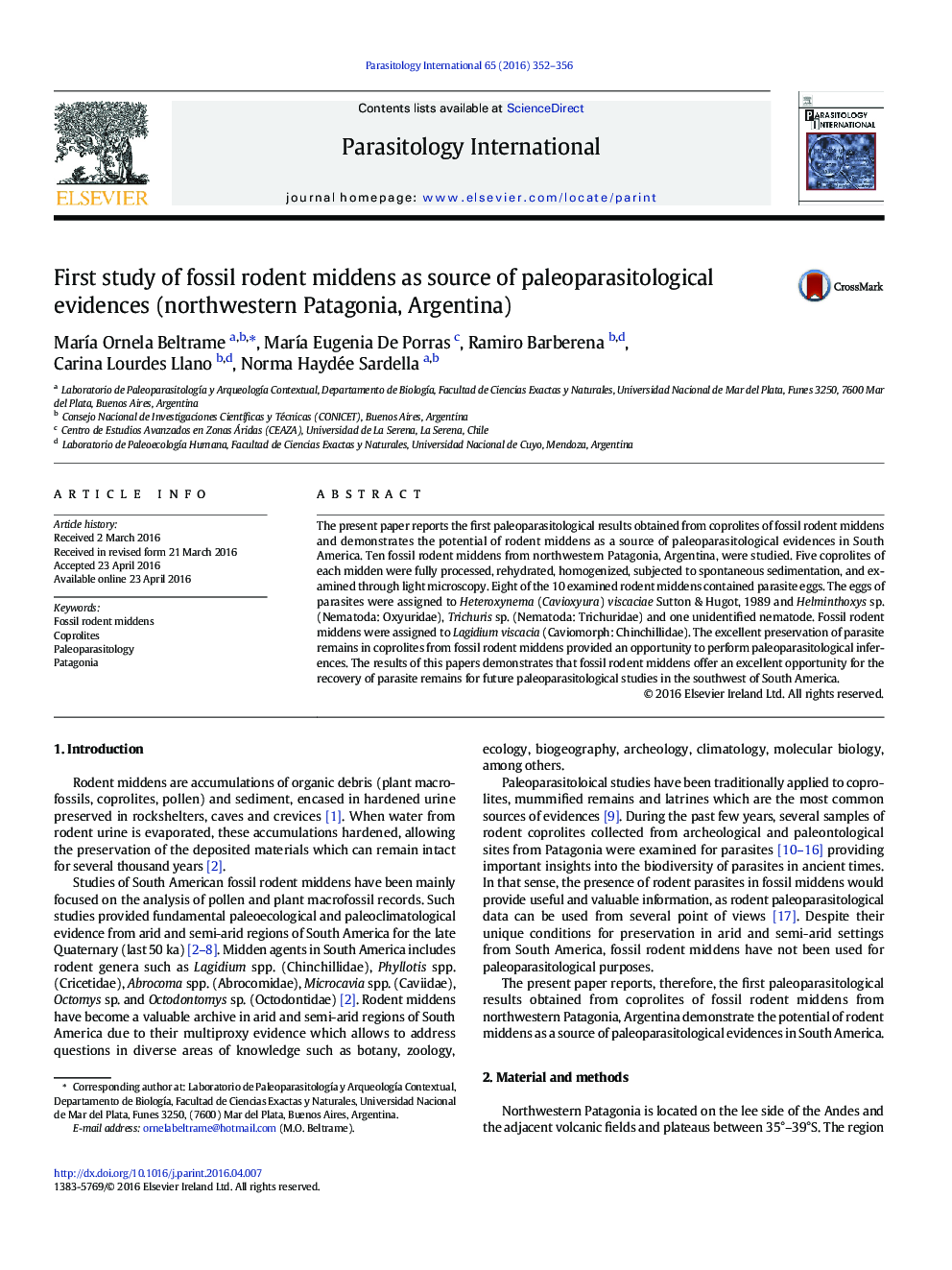| Article ID | Journal | Published Year | Pages | File Type |
|---|---|---|---|---|
| 3417739 | Parasitology International | 2016 | 5 Pages |
•First paleoparasitological results from coprolites of fossil rodent middens•Coprolites from 10 fossil middens (northwestern Patagonia, Argentina) were studied•Parasite remains in excellent preservation were found in coprolites•Fossil rodent middens were assigned to Lagidium viscacia (Caviomorph)•Middens offer an excellent opportunity for the recovery of ancient parasite remains
The present paper reports the first paleoparasitological results obtained from coprolites of fossil rodent middens and demonstrates the potential of rodent middens as a source of paleoparasitological evidences in South America. Ten fossil rodent middens from northwestern Patagonia, Argentina, were studied. Five coprolites of each midden were fully processed, rehydrated, homogenized, subjected to spontaneous sedimentation, and examined through light microscopy. Eight of the 10 examined rodent middens contained parasite eggs. The eggs of parasites were assigned to Heteroxynema (Cavioxyura) viscaciae Sutton & Hugot, 1989 and Helminthoxys sp. (Nematoda: Oxyuridae), Trichuris sp. (Nematoda: Trichuridae) and one unidentified nematode. Fossil rodent middens were assigned to Lagidium viscacia (Caviomorph: Chinchillidae). The excellent preservation of parasite remains in coprolites from fossil rodent middens provided an opportunity to perform paleoparasitological inferences. The results of this papers demonstrates that fossil rodent middens offer an excellent opportunity for the recovery of parasite remains for future paleoparasitological studies in the southwest of South America.
Graphical abstractFigure optionsDownload full-size imageDownload as PowerPoint slide
